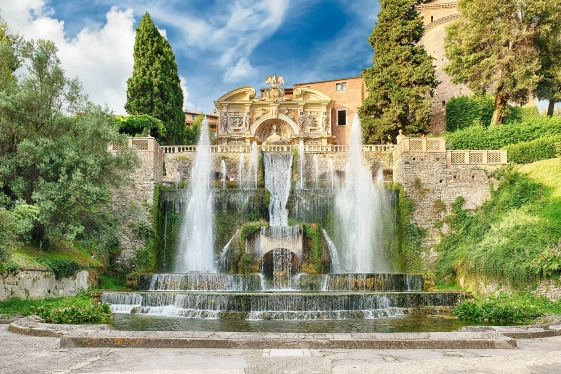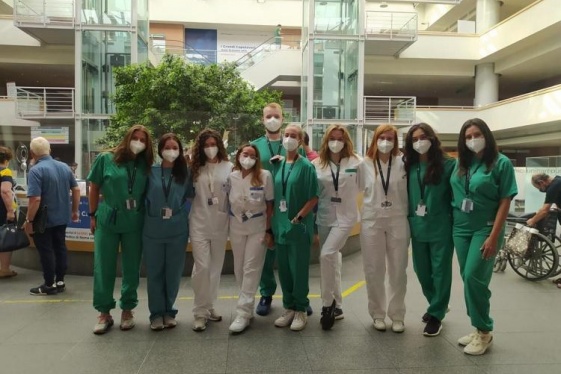Villa d'Este, Tivoli, a Water Dream and UNESCO World Heritage Site since 2001
Villa d'Este, in Tivoli, less than 30 km from Rome, is a true masterpiece of hydraulic engineering and a spectacle of Renaissance architecture. It is defined as a "water dream" for its theatricality that amazes and accompanies visitors during their stay in this oasis of peace a stone's throw from the capital, lulled by the cadenced rhythm of the fo...
READ MOREItalian culture and history: A cultural Grand Tour through the most fascinating places in central and southern Italy
If we had to retrace the trip to Italy in the footsteps of the legendary XVII-century Grand Tour, we should take a long journey full of charming stopovers anywhere in the country. After retracing the best historical and cultural places in northern and central Italy, we now resume our journey and go south: must-do stops of our modern cultural grand...
READ MORERome remembers Nazi raid on Jewish Ghetto 78 years ago
Rome's Jewish community commemorates today the 78th anniversary of the deportation of more than 1,000 of the city’s Jews to the Nazi extermination camp at Auschwitz. The raid occurred at dawn on 16 October 1943, when 1,024 Roman Jews, including 200 children, were rounded up in the city’s Ghetto district and taken across the Tiber to the Collegio Mi...
READ MOREAll you need to know about Catacombs in Rome
The largest complex of catacombs is found in Rome, hosting approximately 60 excavations. Visiting these ancient cemeteries through their long tunnels and passages, allows tourists and locals to explore the rituals, customs, and traditions of the ancient Romans. The ancient term to designate these monuments is “coemeterium”, which derives from Greek...
READ MOREEtruscan Necropolises of Tarquinia and Cervetari
A HILL JUST OUTSIDE THE city of Tarquinia conceals a labyrinthine necropolis of the Ancient Etruscan civilization that lies beneath. The mysterious Etruscan civilization ruled the region of Erturia, an area that comprises modern-day Tuscany, Umbria, Emilia-Romagna, Veneto, Lombardy, and Campania. The city of Tarquinia (known to the Etruscans as “Ta...
READ MORELazio, in the shade of the greatness of Rome
La Bella Italia, interesting and enchanting. My dear friends, my journey continues as I discover the wonders of this beautiful country. I would like to thank all of you for following me on my travel, hope you are enjoying the stories from my trip. My diary page today will be written on the region that lies very much in the shadow of its largest cit...
READ MOREThe Trevi Fountain in Rome
The story of the Trevi Fountain, one of Rome’s most famous fountains, starts with a young girl. According to legend, the source of Acqua Vergina aqueduct, which feeds the Trevi, was discovered by a young girl (the titular “virgin”) who later showed it to a group of thirsty Roman soldiers returning to Rome. When Marcus Agrippa caught wind of it, he...
READ MORESupplì, Rome's Ultimate Fried Street Food
Supplì, Rome's ultimate fried food, are as famous inside the Italian capital as they are unknown outside. Excellent as an appetizer and or simply on their own, supplì haven't received their due credit outside of Rome. Of course, the national recognition of its "competitor,” Sicilian arancini, hasn't helped. So for better or for worse, supplì contin...
READ MOREDoctors in Italy program offers hands-on experience
With the recent COVID-19 pandemic, countless study abroad programs were cancelled or postponed for the safety of its students. Recently, however, some programs got to resume as early as this past summer. Madelyn Spano, a third-year biochemistry student from San Angelo, was one of 24 students picked from the United States to attend the Doctors in It...
READ MOREItalian Curiosities: Was Emperor Nero Really Mad?
Nero, a madman! Popular belief — and many a “sword-and-sandal” classics — convinced us all the red-haired son of Agrippina the Younger and last Emperor of the Julio-Claudian dynasty was far from sane, but is this the historical truth? Born Lucius Domitius Ahenobarbus in 37 AD, he became Nero Claudius Caesar Augustus Germanicus when adopted by Emp...
READ MORE











